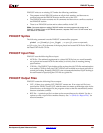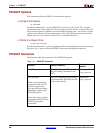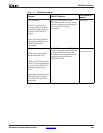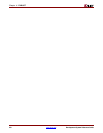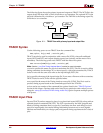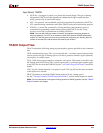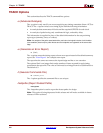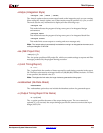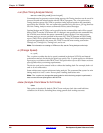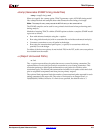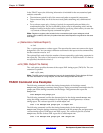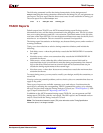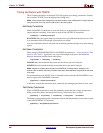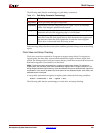
214 www.xilinx.com Development System Reference Guide
Chapter 12: TRACE
R
TRACE Options
This section describes the TRACE command line options.
–a (Advanced Analysis)
The –a option is only used if you are not supplying any timing constraints (from a PCF) to
TRACE. The –a option writes out a timing report with the following information:
• An analysis that enumerates all clocks and the required OFFSETs for each clock.
• An analysis of paths having only combinatorial logic, ordered by delay.
This information is supplied in place of the default information for the output timing
report type (summary, error, or verbose).
Note:
An analysis of the paths associated with a particular clock signal includes a hold violation
(race condition) check only for paths whose start and endpoints are registered on the same clock
edge.
–e (Generate an Error Report)
–e [limit]
The –e option causes the timing report to be an error report instead of the default summary
report. See “Error Report” for a sample error report.
The report has the same root name as the input design and has a .twr extension.
The optional limit is an integer limit on the number of items reported for each timing
constraint in the report file. The value of limit must be an integer from 0 to 32,000 inclusive.
The default is 3.
–f (Execute Commands File)
–f command_file
The –f option specifies the command file to use as input.
–fastpaths (Report Fastest Paths)
–fastpaths
The –fastpaths option is used to report the fastest paths of a design.
Note: This option is being deprecated in this release and will not be available in future
releases of Xilinx software.




